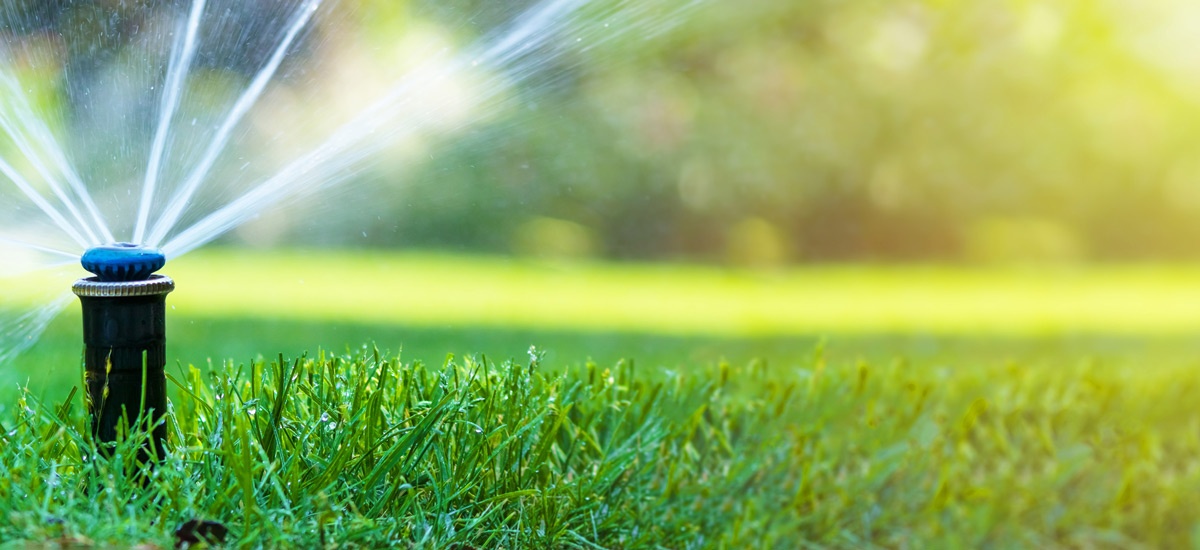How to Aerate Your Lawn – A Step-by-Step Guide
In the case of lawns that have been established on clay or compacted soil, the topsoil will become trampled and compacted over time, especially if the lawn is used frequently. This compaction process has a negative impact on the overall condition of the lawn.
Why is it beneficial to aerate your lawn?
Compacted soil restricts air access to the roots of the lawn. At the same time, it impairs the absorption of water and nutrients into the soil. Water may not soak in during heavy rain or watering and most of it runs off or evaporates from the surface. As a result, the lawn suffers from a lack of moisture and is more susceptible to mold infestation. If you want to keep your lawn in optimal condition, regular aeration is a must.
How to aerate your lawn properly
1. Start by mowing the grass
Before aeration, the lawn must be mowed. The reason is quite simple – a shorter lawn is easier to work with. It will be easier to verticut and groom. What is more, it will also be much easier to work sand into the holes that emerge in the lawn after aeration is finished.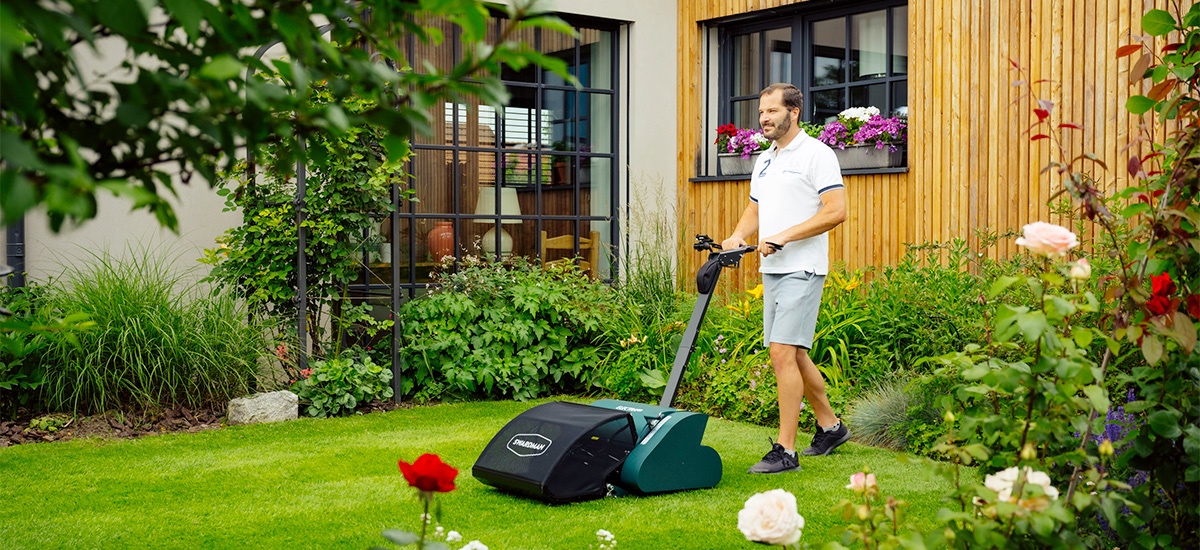
2. Perform verticutting
Verticutting removes the thatch from the lawn, cutting vertically through the top layer of vegetation to a depth of 3-5 mm. It cuts the horizontally growing grass blades and perfectly prepares the lawn for aeration.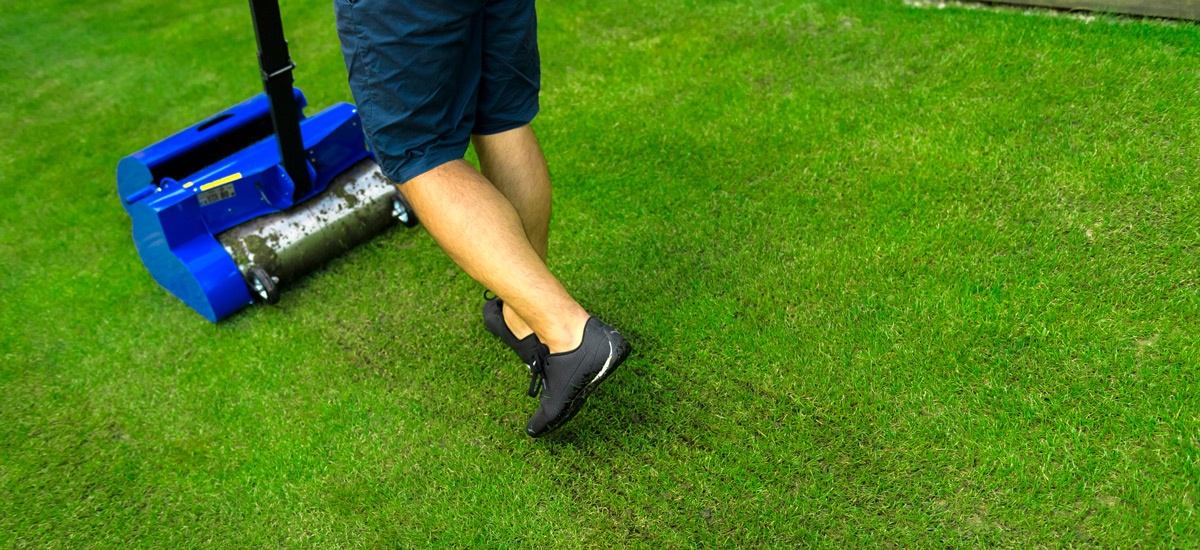
3. Scarify the lawn
After verticutting, there is usually a lot of organic material left on the lawn surface that should be removed. This can be easily achieved with the help of a scarifier. It removes any residual thatch still left in the lawn and on the surface after verticutting.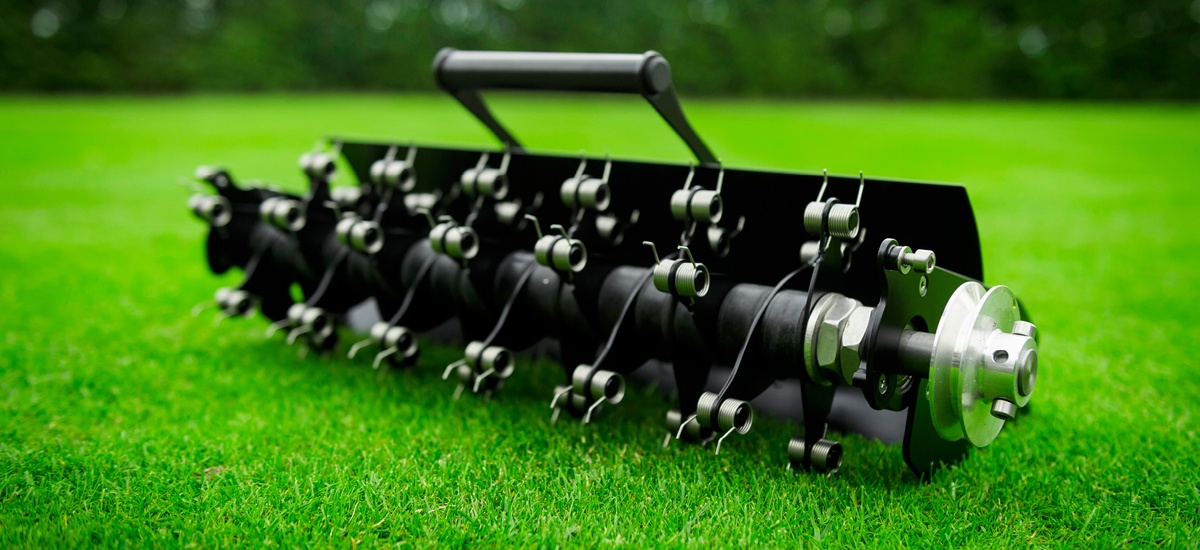
4. Aerate the lawn with hollow tines
For aerating the lawn and improving water and nutrient absorption, hollow tines are ideal. Smaller areas can be aerated easily with a proper fork aerator, while for larger areas over 100 m2, a professional aeration machine is more suitable and makes the job at hand much easier. The holes should be made side by side at approximately 10 cm intervals to a depth of 7-10 cm. Rake up the rolls of compacted soil from the surface of the lawn and dispose of them appropriately (we recommend adding them to the compost).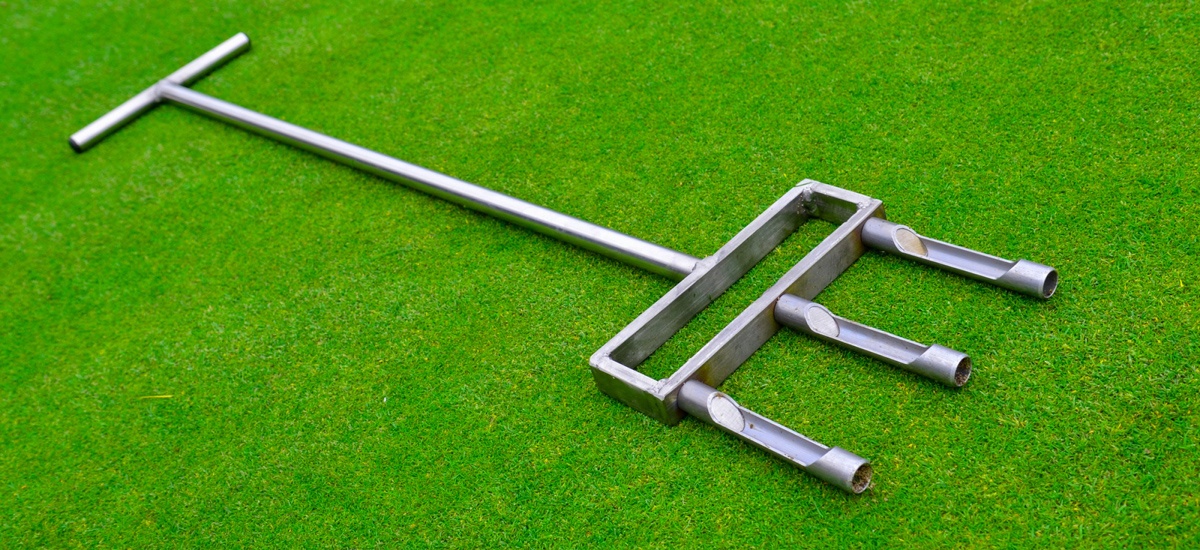
5. Sand the lawn
After the lawn is aerated, work silica sand into the holes. The use of silica sand is essential. This is because it has sharp edges and does not compact. Suitable fractions are approximately 0-2 mm. Spread the sand over the lawn roughly with a shovel and a lawn levelling rake, the other side of a simple rake or, if you have a Swardman mower, use a rotary brush to work the sand into the holes.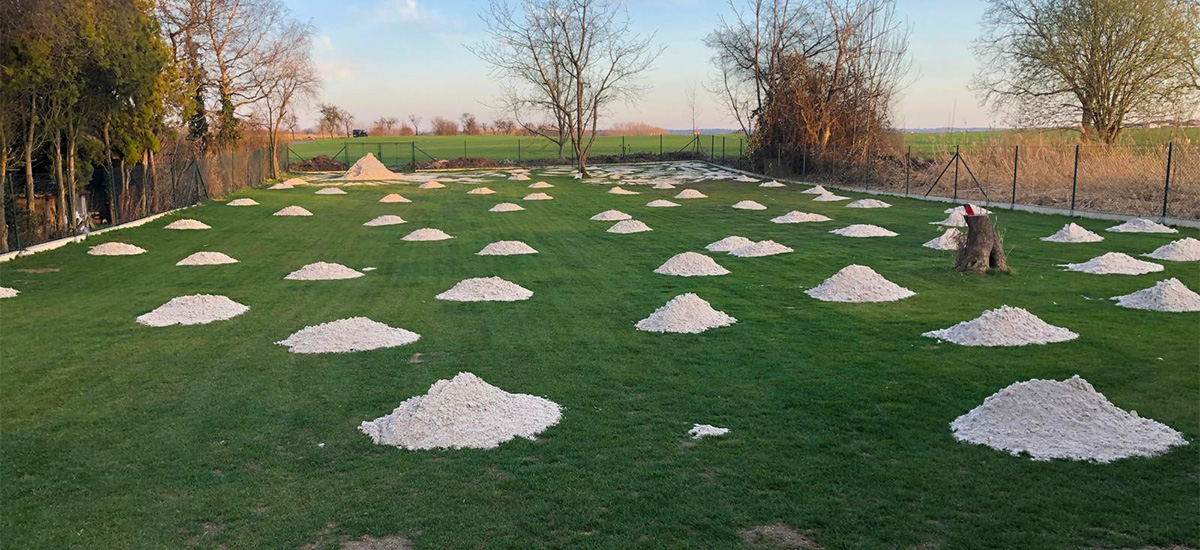
6. Apply the fertilizer
At this stage, you can fertilize the lawn with a high-quality fertilizer to provide it with the necessary nutrients for regeneration.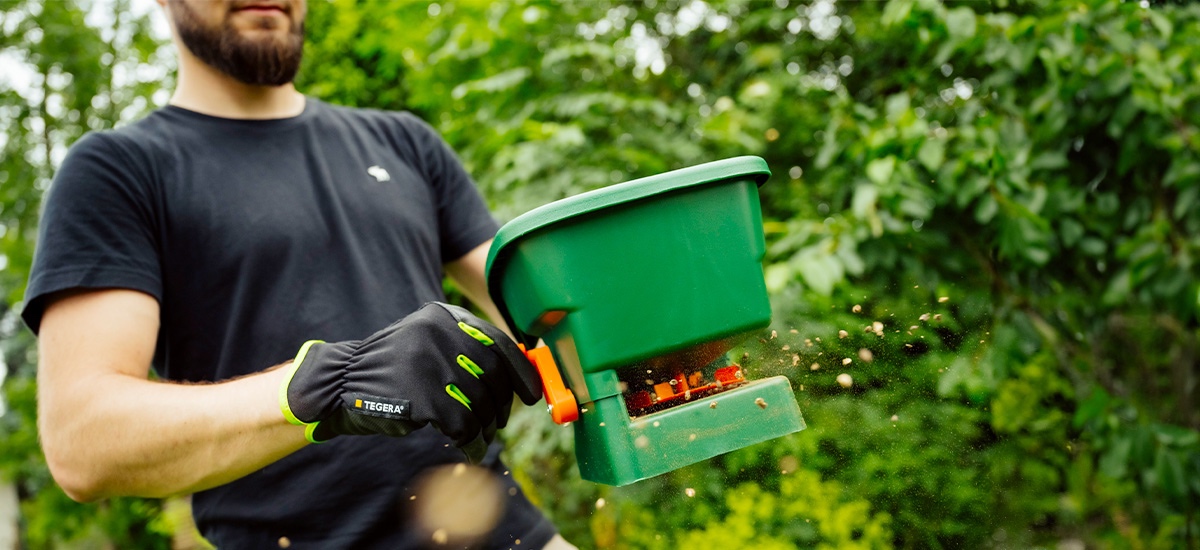
7. Reseed the lawn completely
After verticutting, scarification, aeration, and sanding, bare spots can appear in the lawn where weeds or weedy grass species can easily spread. It is therefore advisable to seed the lawn with the grass species you want to dominate on it. It is ideal to stick to the same grass seed you used when establishing the lawn to ensure a beautiful, homogeneous lawn appearance. With us, you can choose from a wide range of grass seeds. For a complete reseeding of your lawn, do not be afraid to use a slightly higher seed rate, e.g. 4-5 kg. This is because the seed has more competition in the form of already grown grass and does not sprout as easily.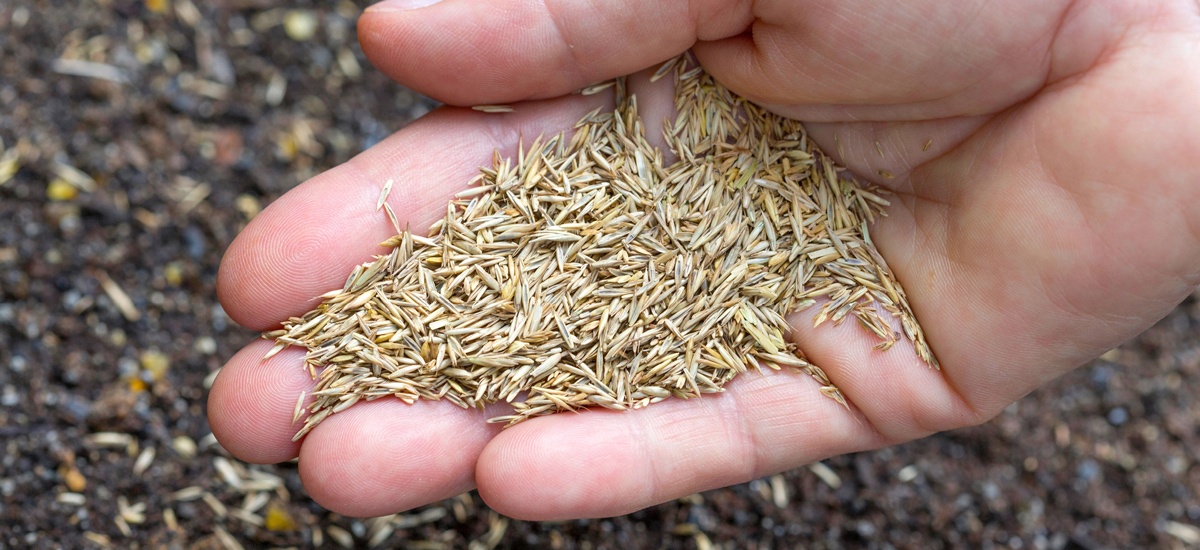
8. Apply substrate
The grass seed needs to be covered with a thin layer of lawn substrate. The layer should be really thin, 1 cm high at the most. Simply sprinkle the substrate on the surface and you should be good to go. You can also roll the substrate with a light roller – it will mix better with the grass seed.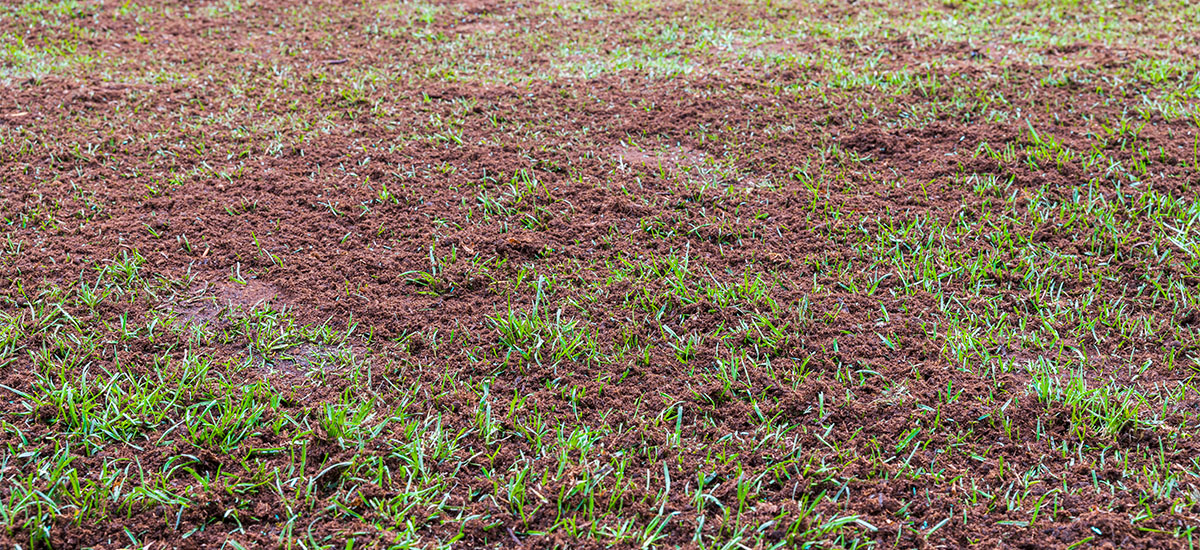
9. Irrigation
Water the lawn at least 3 times a day for the first week or two with a small amount of water. During this period, it is essential that the seeds do not dry out and germinate well. Then, once most of the seeds have germinated, switch to the correct irrigation regime, i.e. less frequently (2-3 times a week) but with a large amount of water.